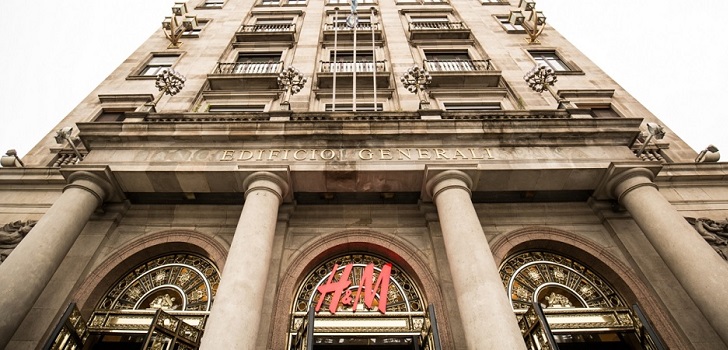H&M pardons fast fashion following best results since 2015
Its 2017 results prompted the crash of the fashion distribution giant in the stock market, causing an avalanche of analyst alerts. H&M has now recovered.

A truce among fashion distribution giants. In 2017, the poor results of H&M hauled Inditex, Gap and Fast Retailing in the stock market and caused an avalanche of alarming reports from analysts, who questioned the model. However, three years later, the group has made a recovery, forecasting that fast fashion still has a future.
The Swedish fashion distribution company has just ended its best year since 2015. The group ended 2019 (closed on November 30) with a revenue increase of 10.6%, the highest in four years, and a profit increase of 6.3%, the first since 2015.
H&M dragged its rivals in the stock market after its disappointing result 2017
The results are the fruits of three years of deep restructuring, in which the group had to close hundreds of stores, it propelled its digitization forward and has practically tried everything, from second hand to custom production.
Today, the company is in a completely different situation from two years ago. In January 2018, H&M presented results that led Karl-Johan Persson to recognize that the company had disconnected from its customers.
In 2017, H&M grew just 4%, to 200 billion crowns (2.1 billion dollars), and reduced its profit by 13.2%. These results alarmed both analysts and investors.
On the day of results presentation, H&M dropped 10.6% in the stock market and dragged its competitors: Gap fell 3.3%, Inditex, 0.6%, and Fast Retailing 0.7%. With the alarming Retail Apocalypse echoing more than ever, analysts rushed to announce the death of the fashion retail model.
The Nordic bank Handelsbanken, for example, came to describe the challenge of H&M in digitalization as a “painful journey”, underlining the “abysmal” difference between the company’s online offer and that of its competitors, using the ecommerce Zalando as an example.
RBC warned that H&M was at risk of “not investing enough to improve the supply of the main chain” and warned that the market underestimates possible cannibalization of store sales with the rapid growth of ecommerce.
Analysts questioned the model of fashion retailers and their ability to compete against online
In 2019, SEB also highlighted the comparison with ecommerce, referring to the growing share of native online companies such as Zalando, Boohoo and Asos to justify their advice to sell H&M shares.
Meanwhile, in 2018, Morgan Stanley published a hard report on Inditex in which he predicted that Inditex will have an “inevitable reduction” in the long term, estimating that the company is increasingly sensitive to currencies, it has registered margin drops and it faces the same pressures as most of the other retail groups.
Inditex responded with the announcement of the greatest transformation in its history and set the goal of selling online worldwide this year. In the last three years, the Spanish group has moderated its growth but has managed to contain the decline in the margin, which stood at 57.7% in 2018 and has recovered to an upward path on the stock market.
Gap and Fast Retailing are in different phases, but just as the H&M crisis dragged them, their recovery plays as a backup for their business models. The US company has managed to stop the drop in profit in the last two years, although it still registers timid sales growth. After years of intense restructuring, the company is now in a transition phase after the departure of its CEO, Art Peck at the end of last year.
Meanwhile, Fast Retailing is at an earlier stage, marked by intense international expansion, which has allowed it to climb up the ranks in recent years.
However, the company has slowed down in the last year, with a sales increase of 7.5% in 2019, compared to 14.4% in 2018, and a profit increase of 5%, compared to 29.8% from the previous year.


info@themds.com
Validation policy for comments:
MDS does not perform prior verification for the publication of comments. However, to prevent anonymous comments from affecting the rights of third parties without the ability to reply, all comments require a valid email address, which won’t be visible or shared.
Enter your name and email address to be able to comment on this news: once you click on the link you will find within your verification email, your comment will be published.